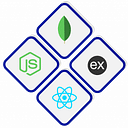Five Basic Concepts of Object-Oriented Design
Object-oriented design (OOD) is a programming paradigm that emphasizes the concept of objects, which are instances of classes, and the interactions between these objects. When designing a system using object-oriented principles, there are five basic concepts that form the foundation of OOD. These concepts are:
Encapsulation: Encapsulation is the practice of bundling data and the methods that operate on that data within a single unit called an object. It involves hiding the internal details of an object and exposing only the necessary interfaces to interact with the object. Encapsulation promotes information hiding and ensures that the internal state of an object is accessed and modified through well-defined methods.
Abstraction: Abstraction involves the process of simplifying complex systems by breaking them down into smaller, more manageable units. In the context of OOD, abstraction allows you to create classes that represent real-world entities or concepts with their essential characteristics and behaviors. It focuses on defining the essential properties and behaviors of an object while hiding the unnecessary details.
Inheritance: Inheritance is a mechanism that allows objects to inherit properties and behaviors from other objects. It enables the creation of new classes (derived classes or subclasses) based on existing classes (base classes or superclasses). Inheritance promotes code reuse, as the derived classes can inherit and extend the attributes and methods of their base classes. It also facilitates the creation of hierarchical relationships between classes, enabling specialization and generalization.
Polymorphism: Polymorphism refers to the ability of objects of different classes to respond to the same message or method invocation in different ways. It allows objects to be treated as instances of their own class or as instances of their superclass. Polymorphism enables code to be written in a more generic and flexible manner, as it allows different objects to be manipulated uniformly through their common interface.
Association: Association represents the relationship between two or more objects, where each object has its own lifecycle and is not dependent on the others. It allows objects to interact and collaborate to accomplish a particular task. Associations can be one-to-one, one-to-many, or many-to-many, depending on the cardinality and multiplicity between the objects involved. Associations are typically represented by instance variables in classes, establishing connections and dependencies between objects.
These five concepts together provide a foundation for designing and building object-oriented systems. By applying these principles, developers can create modular, reusable, and maintainable code that reflects the structure and behavior of real-world entities.
